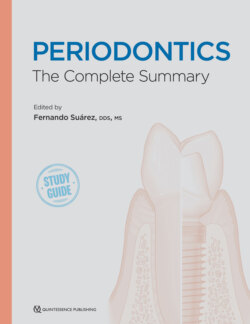Читать книгу Periodontics - Fernando Suarez - Страница 116
IMPACTED THIRD MOLARS
ОглавлениеGenerally, third molar sites are prone to plaque accumulation due to the difficulty of proper access for oral hygiene. Also, impaction of these teeth might create vertical defects on the distal surfaces of second molars.
In a retrospective study, Kugelberg showed a significant correlation between bone healing of third molar extraction sites and patient age.263 Residual probing depths greater than 7 mm and intrabony defects exceeding 4 mm in depth were evaluated in the distal surfaces of second molars after extraction of impacted mandibular third molars. Curiously, a significant improvement of the intrabony defect depth was noted among individuals under 25 years old (Table 5-14).263
TABLE 5-14 Incidence of residual intrabony defects after third molar extraction263
PD, probing depth.
Later, Kugelberg et al confirmed their previous findings in a prospective study and provided evidence that periodontal healing after third molar extraction is impaired in patients over 30 years.264 One year postoperatively, 14% of patients aged 20 years or younger had residual intrabony defects of 4 mm or greater, while 47% of the patients aged 30 years or older had intrabony defects 4 mm or greater following removal of the impacted third molars. Thus, early removal of the impacted third molars with severe angulation and close positional relationship adjacent to the second molars will benefit the periodontal health.264
